-
 bitcoin
bitcoin $110918.433029 USD
-1.69% -
 ethereum
ethereum $3996.872473 USD
-2.43% -
 tether
tether $1.000594 USD
0.00% -
 bnb
bnb $1178.871834 USD
-2.38% -
 xrp
xrp $2.413973 USD
-3.47% -
 solana
solana $194.341461 USD
-4.24% -
 usd-coin
usd-coin $0.999963 USD
-0.03% -
 tron
tron $0.320092 USD
0.92% -
 dogecoin
dogecoin $0.196919 USD
-3.42% -
 cardano
cardano $0.669585 USD
-3.63% -
 hyperliquid
hyperliquid $37.485952 USD
-3.58% -
 ethena-usde
ethena-usde $1.000026 USD
-0.02% -
 chainlink
chainlink $18.018220 USD
-5.13% -
 bitcoin-cash
bitcoin-cash $523.879267 USD
-2.41% -
 stellar
stellar $0.324655 USD
-3.67%
How does DMI filter false signals? What does the flattening of the ADX curve mean?
DMI and ADX help crypto traders filter false signals by confirming trend strength; a flat ADX curve indicates market consolidation or trend exhaustion.
Jun 06, 2025 at 10:01 am
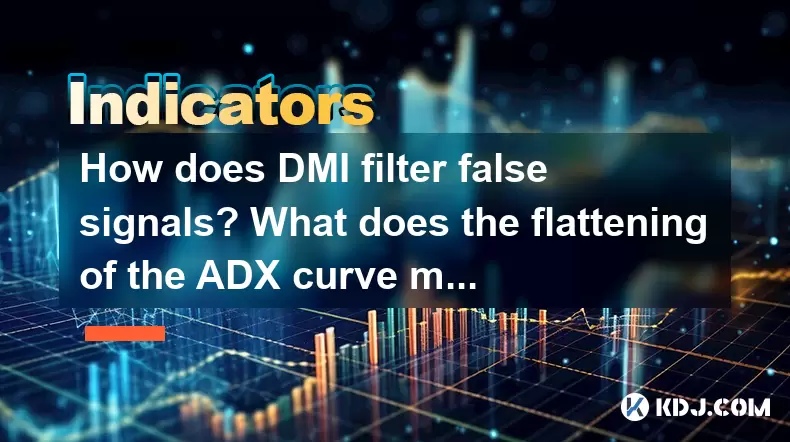
The Directional Movement Index (DMI) and the Average Directional Index (ADX) are essential tools in technical analysis, particularly within the cryptocurrency trading community. These indicators help traders identify the strength of a trend and filter out false signals, which is crucial in the volatile crypto market. This article will delve into how the DMI can filter false signals and what the flattening of the ADX curve signifies.
Understanding the DMI and ADX
The DMI consists of two lines: the Positive Directional Indicator (+DI) and the Negative Directional Indicator (-DI). These lines help traders gauge the direction of the market. The ADX, on the other hand, measures the strength of the trend, regardless of its direction. The ADX line is calculated based on the difference between +DI and -DI over a specified period, typically 14 days.
How DMI Filters False Signals
In the cryptocurrency market, false signals can lead to significant losses. The DMI helps filter these signals by providing a clearer picture of the market's direction. Here’s how it works:
- Crossovers of +DI and -DI: When the +DI line crosses above the -DI line, it suggests a bullish trend, and when the -DI line crosses above the +DI line, it indicates a bearish trend. However, traders often wait for confirmation from the ADX to ensure the trend is strong enough to act upon.
- Confirmation with ADX: A rising ADX value above 25 indicates a strong trend. If the ADX is below 25, it suggests a weak or non-existent trend, and any signals from the DMI should be treated with caution. This helps traders avoid acting on false signals in a ranging market.
- Avoiding Overtrading: By using the DMI and ADX together, traders can avoid overtrading in choppy markets. If the ADX remains low, it indicates that the market is in a consolidation phase, and traders should refrain from taking positions based on short-term signals.
The Significance of the ADX Curve
The ADX curve is a crucial element in understanding market trends. A rising ADX indicates increasing trend strength, while a falling ADX suggests a weakening trend. However, the flattening of the ADX curve holds particular importance for traders.
What Does the Flattening of the ADX Curve Mean?
When the ADX curve flattens, it signals a period of consolidation or a lack of a clear trend in the market. This can be observed in the following ways:
- Consolidation Phase: A flat ADX curve often indicates that the market is in a consolidation phase, where prices move sideways without a clear direction. During such periods, the strength of both bullish and bearish trends is minimal, and traders should avoid taking aggressive positions.
- Trend Exhaustion: If the ADX was previously rising and then flattens out, it might indicate that the current trend is losing momentum. This can be a signal for traders to prepare for a potential reversal or a period of range-bound trading.
- Confirmation of Market Indecision: A flat ADX curve can confirm other indicators of market indecision, such as a narrowing Bollinger Band or a decrease in trading volume. This helps traders avoid entering the market during uncertain times.
Practical Application of DMI and ADX in Crypto Trading
To effectively use the DMI and ADX in cryptocurrency trading, traders can follow these steps:
- Set Up the Indicators: Add the DMI and ADX indicators to your trading platform. Most platforms allow you to customize the period, typically set to 14 days.
- Monitor +DI and -DI Crossovers: Watch for crossovers between the +DI and -DI lines. A crossover above indicates a potential bullish trend, while a crossover below suggests a bearish trend.
- Check ADX Strength: Before acting on a crossover, check the ADX value. If the ADX is above 25, the trend is considered strong, and you can proceed with your trade. If it's below 25, the trend is weak, and you should wait for further confirmation.
- Observe the ADX Curve: Keep an eye on the ADX curve. If it's rising, the trend is gaining strength. If it's falling or flat, the trend is weakening or non-existent, and you should adjust your trading strategy accordingly.
Using DMI and ADX to Filter False Signals in Crypto Trading
Filtering false signals is crucial in cryptocurrency trading due to the market's high volatility. Here’s how you can use the DMI and ADX to filter out these signals:
- Avoid Acting on Weak Trends: If the ADX is below 25, any signals from the DMI should be treated with caution. The market is likely in a consolidation phase, and acting on these signals could lead to losses.
- Wait for Confirmation: Always wait for the ADX to confirm a strong trend before acting on a DMI signal. This reduces the risk of entering the market during false breakouts.
- Use Multiple Timeframes: Analyzing the DMI and ADX on multiple timeframes can provide a more comprehensive view of the market. A strong trend on a higher timeframe is more reliable than a short-term signal on a lower timeframe.
- Combine with Other Indicators: Use the DMI and ADX in conjunction with other technical indicators, such as moving averages or the Relative Strength Index (RSI), to confirm signals and filter out false positives.
Case Studies: DMI and ADX in Action
To illustrate how the DMI and ADX can be used effectively in cryptocurrency trading, let’s look at a few case studies:
- Bitcoin Bullish Trend: In early 2021, Bitcoin experienced a strong bullish trend. The +DI line crossed above the -DI line, and the ADX rose above 25, indicating a strong trend. Traders who waited for this confirmation entered the market at the right time and capitalized on the upward movement.
- Ethereum Consolidation: During mid-2022, Ethereum entered a consolidation phase. The ADX curve flattened out, and the +DI and -DI lines fluctuated around each other without a clear direction. Traders who recognized this pattern avoided taking positions and waited for a clearer trend to emerge.
- Altcoin False Breakout: An altcoin experienced a false breakout in late 2021. The +DI line crossed above the -DI line, suggesting a bullish trend, but the ADX remained below 25. Traders who waited for ADX confirmation avoided entering the market during this false signal and saved themselves from potential losses.
Frequently Asked Questions
Q: Can the DMI and ADX be used for short-term trading in cryptocurrencies?A: Yes, the DMI and ADX can be used for short-term trading, but traders should be cautious. Short-term signals can be more susceptible to false breakouts, so it's crucial to combine these indicators with other tools and analyze multiple timeframes to increase the reliability of the signals.
Q: How often should I check the ADX curve to monitor trend strength?A: It depends on your trading strategy. For day traders, checking the ADX curve every few hours can be beneficial. For swing traders, checking it daily or even weekly might be sufficient. The key is to align your monitoring frequency with your trading timeframe and strategy.
Q: Are there any specific cryptocurrencies where the DMI and ADX work better?A: The DMI and ADX are versatile indicators that can be applied to any cryptocurrency. However, they tend to work better with cryptocurrencies that have higher liquidity and trading volume, such as Bitcoin and Ethereum, as these markets tend to have clearer trends and less noise.
Q: Can the DMI and ADX be used in conjunction with automated trading systems?A: Yes, the DMI and ADX can be integrated into automated trading systems. Many trading bots and algorithms use these indicators to generate buy and sell signals based on trend strength and direction. However, it's important to backtest and fine-tune the system to ensure it performs well in different market conditions.
Disclaimer:info@kdj.com
The information provided is not trading advice. kdj.com does not assume any responsibility for any investments made based on the information provided in this article. Cryptocurrencies are highly volatile and it is highly recommended that you invest with caution after thorough research!
If you believe that the content used on this website infringes your copyright, please contact us immediately (info@kdj.com) and we will delete it promptly.
- Cryptos in Flux: MoonBull's Lunar Stampede, Solana's Struggle, and XRP's ETF Hopes
- 2025-10-17 06:25:11
- Remittix Presale, RTX Token, and DeepSnitch AI: The Next Big Thing in Crypto?
- 2025-10-17 07:25:17
- Bitcoin, Trump & Meme Coins: Newsmax's Bold Move & AlphaPepe's Rise
- 2025-10-17 07:25:17
- SEI Forms Inverse Head & Shoulders: Breakout Imminent?
- 2025-10-17 07:10:01
- Cardone Capital Dives Deeper: Why Grant Cardone is Buying More Bitcoin Now
- 2025-10-17 06:25:11
- Newsmax, Bitcoin, and Trump Coin: A Bold Crypto Play?
- 2025-10-17 07:10:01
Related knowledge
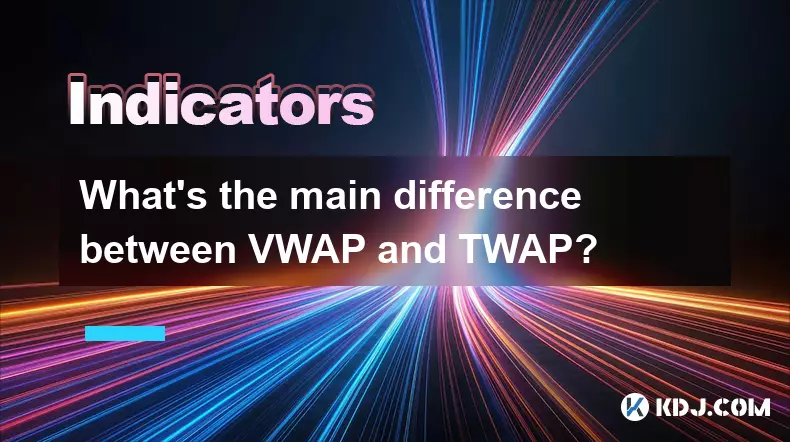
What's the main difference between VWAP and TWAP?
Oct 12,2025 at 11:54am
Understanding VWAP and Its Role in Crypto Trading1. Volume Weighted Average Price (VWAP) is a trading benchmark that calculates the average price of a...
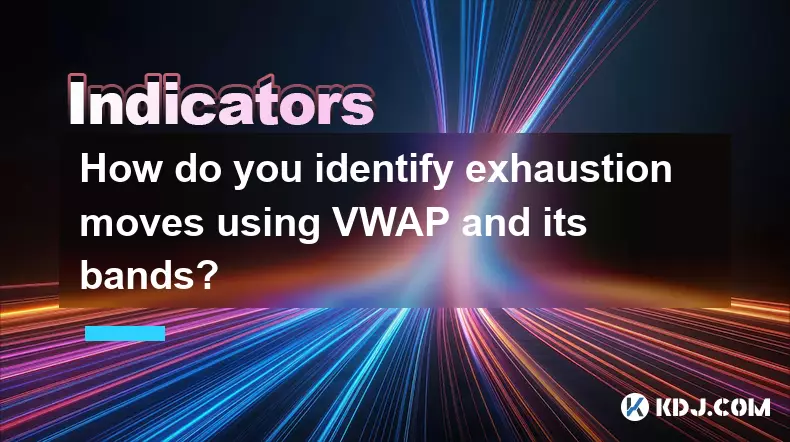
How do you identify exhaustion moves using VWAP and its bands?
Oct 12,2025 at 08:00am
Understanding the Role of Decentralized Exchanges in Crypto Trading1. Decentralized exchanges (DEXs) operate without a central authority, allowing use...
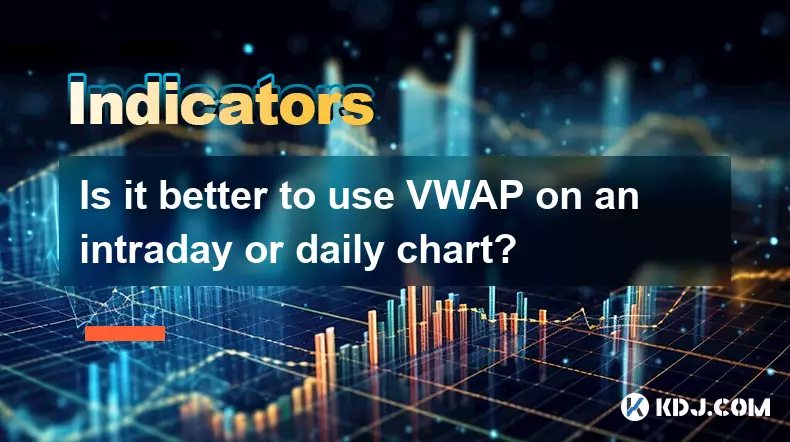
Is it better to use VWAP on an intraday or daily chart?
Oct 15,2025 at 02:01am
Intraday Trading and the Role of VWAP1. Intraday traders frequently rely on VWAP (Volume Weighted Average Price) as a dynamic benchmark for assessing ...
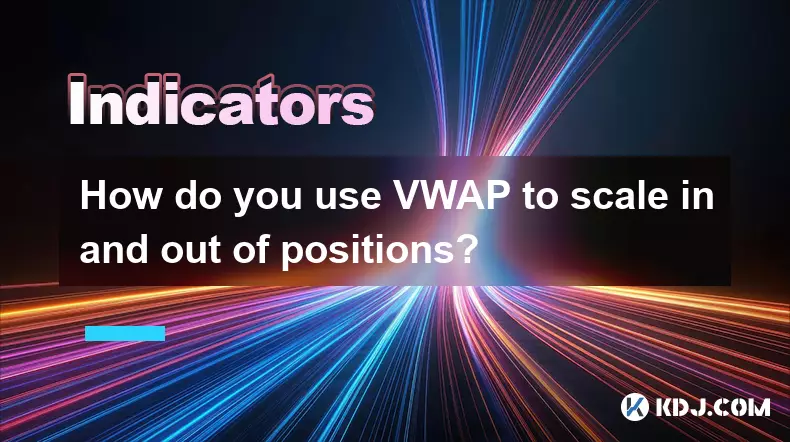
How do you use VWAP to scale in and out of positions?
Oct 14,2025 at 02:19am
Understanding VWAP as a Dynamic Benchmark1. The Volume Weighted Average Price (VWAP) is not just an indicator—it functions as a dynamic benchmark that...
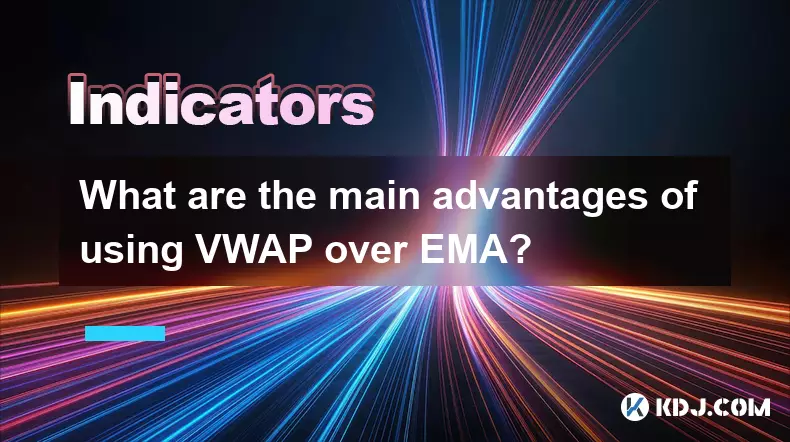
What are the main advantages of using VWAP over EMA?
Oct 11,2025 at 02:18am
Main Advantages of Using VWAP Over EMA1. Volume-Weighted Average Price (VWAP) incorporates trading volume into its calculation, offering a more accura...

How do you use VWAP on different chart types like Heikin Ashi?
Oct 11,2025 at 05:01pm
Understanding VWAP in the Context of Heikin Ashi Charts1. The Volume Weighted Average Price (VWAP) is a powerful analytical tool commonly used by trad...

What's the main difference between VWAP and TWAP?
Oct 12,2025 at 11:54am
Understanding VWAP and Its Role in Crypto Trading1. Volume Weighted Average Price (VWAP) is a trading benchmark that calculates the average price of a...

How do you identify exhaustion moves using VWAP and its bands?
Oct 12,2025 at 08:00am
Understanding the Role of Decentralized Exchanges in Crypto Trading1. Decentralized exchanges (DEXs) operate without a central authority, allowing use...

Is it better to use VWAP on an intraday or daily chart?
Oct 15,2025 at 02:01am
Intraday Trading and the Role of VWAP1. Intraday traders frequently rely on VWAP (Volume Weighted Average Price) as a dynamic benchmark for assessing ...

How do you use VWAP to scale in and out of positions?
Oct 14,2025 at 02:19am
Understanding VWAP as a Dynamic Benchmark1. The Volume Weighted Average Price (VWAP) is not just an indicator—it functions as a dynamic benchmark that...

What are the main advantages of using VWAP over EMA?
Oct 11,2025 at 02:18am
Main Advantages of Using VWAP Over EMA1. Volume-Weighted Average Price (VWAP) incorporates trading volume into its calculation, offering a more accura...

How do you use VWAP on different chart types like Heikin Ashi?
Oct 11,2025 at 05:01pm
Understanding VWAP in the Context of Heikin Ashi Charts1. The Volume Weighted Average Price (VWAP) is a powerful analytical tool commonly used by trad...
See all articles










































































